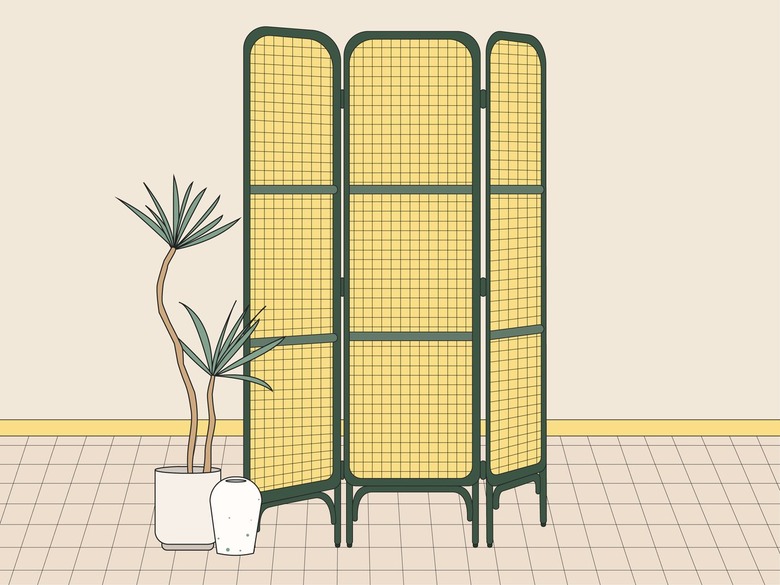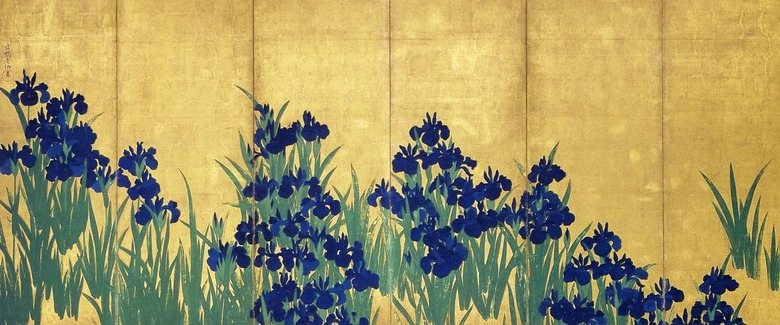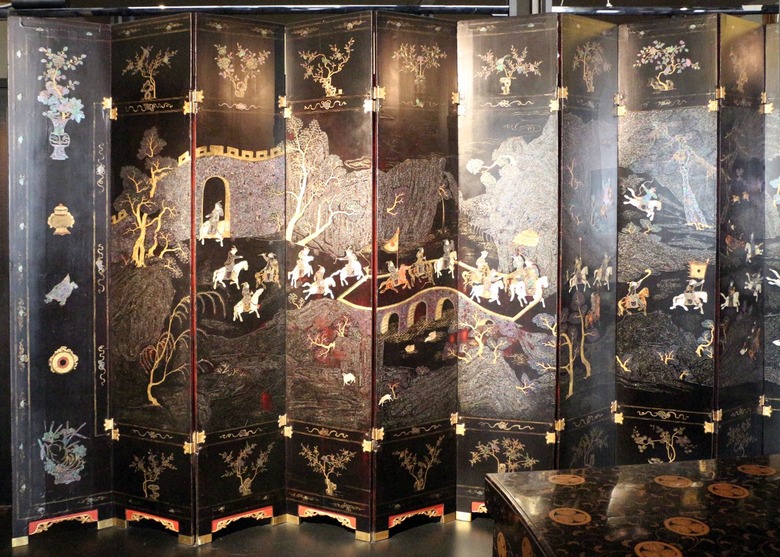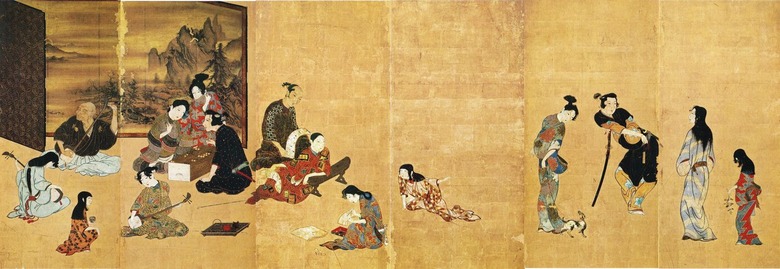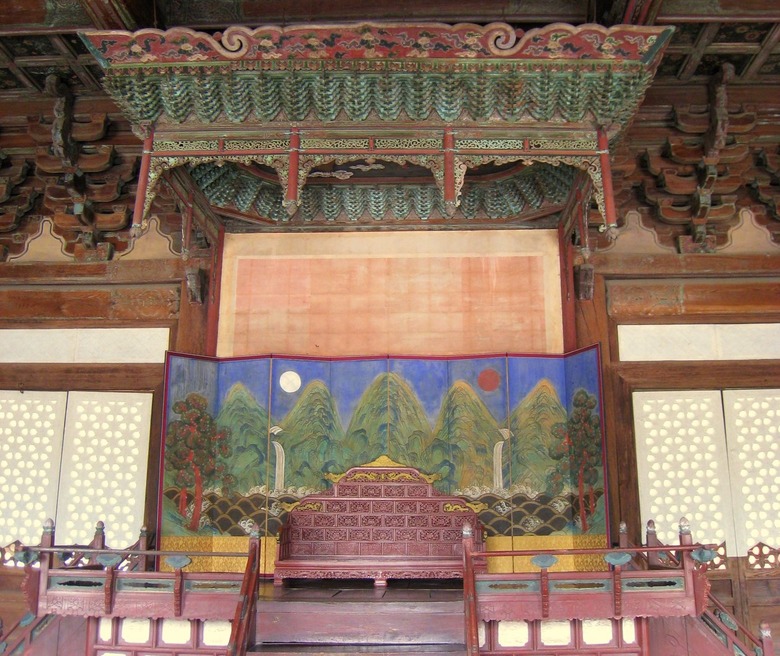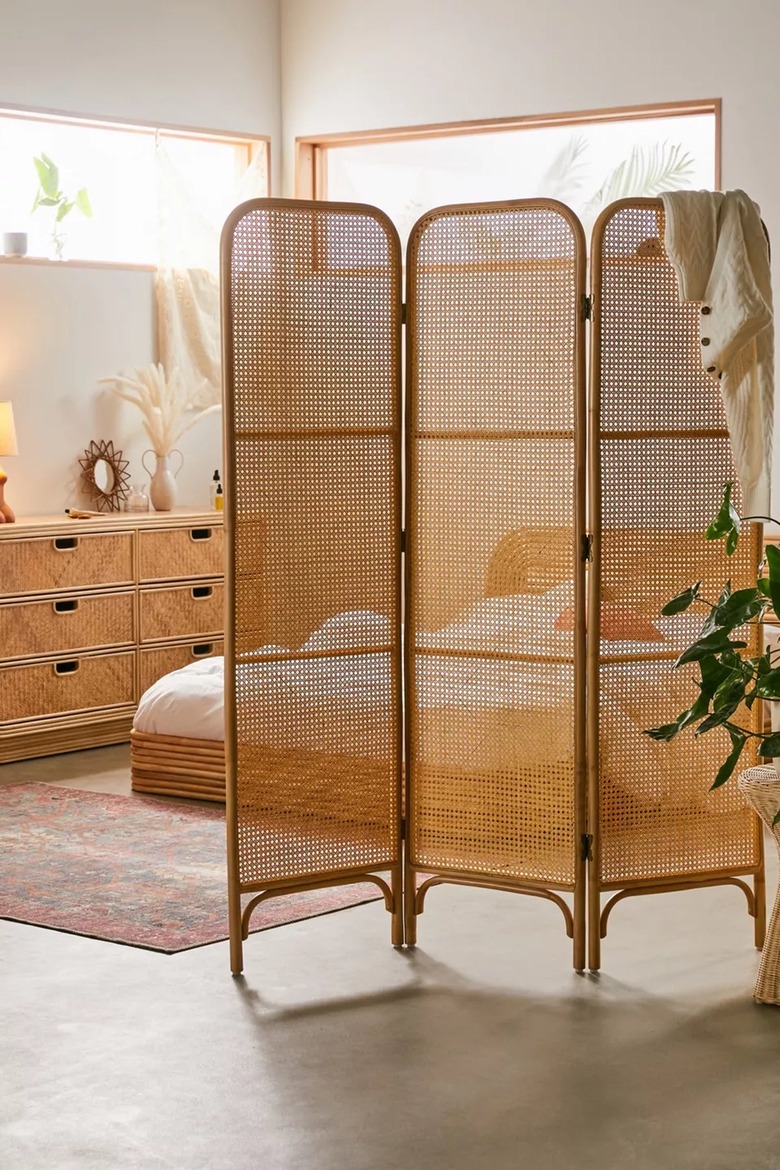How Folding Screens Have Balanced Fashion And Function Over Time
If you've ever studied art history or interior design, there's a solid chance you've come across a folding screen, either as a museum piece or while shopping for a project. Or perhaps you discovered the functional item while looking for a stylish way to divide your studio apartment and carve out a privacy nook.
These free-standing pieces of furniture are split between being purely decorative and being very functional — both in antiquity and the present day.
Here's everything you need to know about folding screens.
The history of folding screens
The history of folding screens
Folding screens were invented in ancient China during the Han Dynasty (206 B.C. to 220 A.D.). Originally made of heavy wood and decorated with paintings of landscapes, mythologies, and scenes of daily life, folding screens served both practical and decorative functions. They were used as room dividers, creating privacy, but also as objets d'art. The popularity of folding screens grew throughout China, and they were increasingly made of luxe materials like silk.
The screens made their way to Japan in the eighth century, according to the Smithsonian Center for Materials Research and Education. There, the screen styles and uses developed even further. Japanese folding screens were made from both traditional wood panels and delicate materials like paper and gold leaf, and the most iconic ones were painted by Japan's top artists. They served many purposes — as backdrops to tea ceremonies, privacy screens for dressing areas, and even diplomatic gifts.
It was the practice of gifting folding screens that introduced the West to the item. According to Christie's, Japan sent folding screens to Spain, Portugal, and Italy in the late 16th century. Then, as the chinoiserie craze swept Europe in the 17th and 18th centuries, the screens became increasingly popular in aristocratic homes.
What are different types of folding screens?
What are different types of folding screens?
Each Asian culture that used folding screens developed its own take on the piece of furniture.
Coromandel screens: Coromandel screens, which date from the Kangxi period of the Chinese Qing dynasty (1661–1722), are made of ebony wood and lacquer, and inlaid with precious materials like jade and mother-of-pearl. Coromandel screens were named after the Indian coast and from there they were shipped to Europe, according to Encyclopedia Britannica. Coco Chanel was an avid collector of Coromandel screens, reportedly owning 32 at one point. "I nearly fainted with joy when, entering a Chinese shop, I saw a Coromandel for the first time," she once wrote.
Byōbu: In Japan, folding screens are called byōbu, which, loosely translated, means "protection from the wind," according to the Dallas Museum of Art. These multi-panel screens became a favorite canvas of Japanese painters, who frequently painted landscapes or moments of daily life. Some even depicted erotic scenes.
Irworobongdo: Unlike Chinese and Japanese screens, Korean irworobongdo always feature the same design — a landscape with the sun, moon, and five mountain peaks. In fact, that's exactly what irworobongdo means in Korean, per the Korean Herald. They were used behind the throne of the Joseon royal court, which existed between the 14th and 19th centuries.
What are folding screens used for today?
What are folding screens used for today?
The purpose of folding screens hasn't changed much since ancient times. They're primarily used in homes as both room dividers and objets d'art (so long as they're a statement piece). The difference between the folding screens of now and then can primarily be seen in the style — landscapes and scenes of daily life are no longer that popular on contemporary screens. Instead, they can be minimalist without any decoration, focusing more on shape and material, or they can be upholstered in patterned fabric.
Regardless of how folding screens have changed over time, one aspect of their design remains consistent: the perfect balance between fashion and function.
